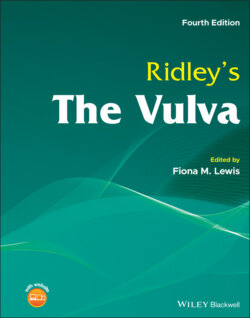Читать книгу Ridley's The Vulva - Группа авторов - Страница 137
History and examination in children
ОглавлениеThe history for younger children will be given by the parents, but older children can often give a good account of their symptoms. Additional questions about toileting, bladder, and bowel function are important as these are frequent issues in children with vulval symptoms. As in adults, a specific proforma for taking the history in a paediatric patient is useful.
Most older children will permit examination of the vulva and perianal area in the same position as adults in a ‘frog‐leg’ position. Younger children and babies can be held by a parent and positioned in front of them [32]. As the labia majora are not fully formed, visualisation is usually easy, and even the vestibule and hymen are often readily visible without any need to separate the labia minora. Gentle downward traction on the lower buttocks will expose the area if needed. In specific situations, such as suspicion of a foreign body, examination under anaesthesia may be required.
Figure 5.2 Diagnostic clues to be found at other sites.
Investigation of the vagina in children requires the expert help of a paediatric gynaecologist. The un‐oestrogenised vaginal mucosa can be easily damaged even with cotton‐tipped swabs [33]. An alternative is a small 5 mm endoscope with the capacity for irrigation or very small catheters to obtain secretions.
